Devotion – Part 1: Myanmar
Chapter 2: Kyaiktiyo Pagoda and Golden Rock
The morning drive from Yangon to Kinpun base camp could be under three hours if we had removed a couple of uneventful stops we made along the way. Kinpun seemed to be a small town that revolves around an active terminal of trucks going in and out. Inside the terminal a large sign, in Burmese and English, directed “pilgrims” to the location of bathrooms.
Wikipedia defines “pilgrimage” as:
“a journey, often into an unknown or foreign place, where a person goes in search of new or expanded meaning about their self, others, nature, or a higher good, through the experience. It can lead to a personal transformation, after which the pilgrim returns to their daily life.”
The article indicates that two of the the main Buddhist pilgrimages in Myanmar are the Shwedagon (that we visited last week) and the Kyaiktiyo Pagoda that we will visit in this chapter. (The others in Myanmar are Bagan, the Mahamuni Buddha and Mandalay Hill, all of which we will visit in future chapters, and finally Sagaing Hill, that I did not visit.)
At the terminal we stepped out of our van and waited while our guide confirmed some kind of an arrangement with the manager of the trucks. We did not know much about where we were going for this overnight trip except that we would see a “golden rock?”
A few feet away from the negotiation a truck was stopped at a platform made of plywood that was at the same height but not quite as long as the bed/box of the truck. Wooden stairs led up to the platform. In the box of the truck was a row of seven metal benches with back support, each spanning the width of the box. Welded onto the top of each back support was a metal bar extending the length of the bench for passengers to hold on to. The box was open air except for a canvas awning to protect people from direct sunlight but probably not from rain?
Local people were crowded around the platform waiting for their turn to quickly walk up the wooden stairs, choose a row that still had space and claim a seat. When the truck operators gave the word, the crowd pranced in one flowing movement into the truck in under 30 seconds. The operators made sure that every inch of each bench was used to load as many passengers as possible. Behind the last bench was an area where another bench could have been but was open for supplies. If there were no supplies more passengers, all men, were squeezed in to make the journey standing. Behind the box was a wooden shelf for crew of the truck to stand on for the ride.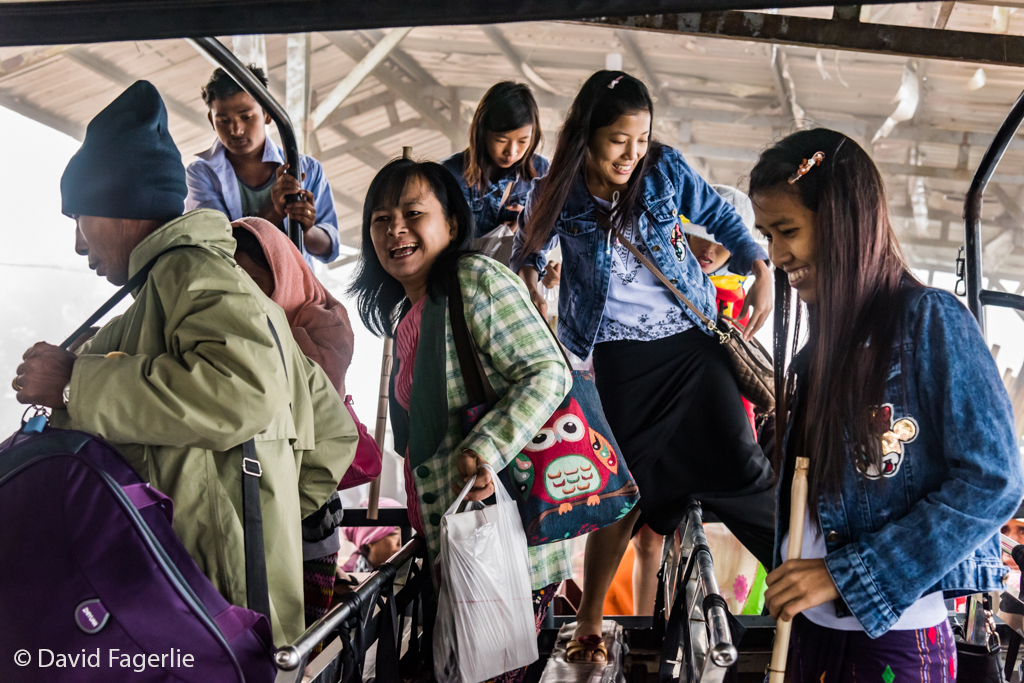
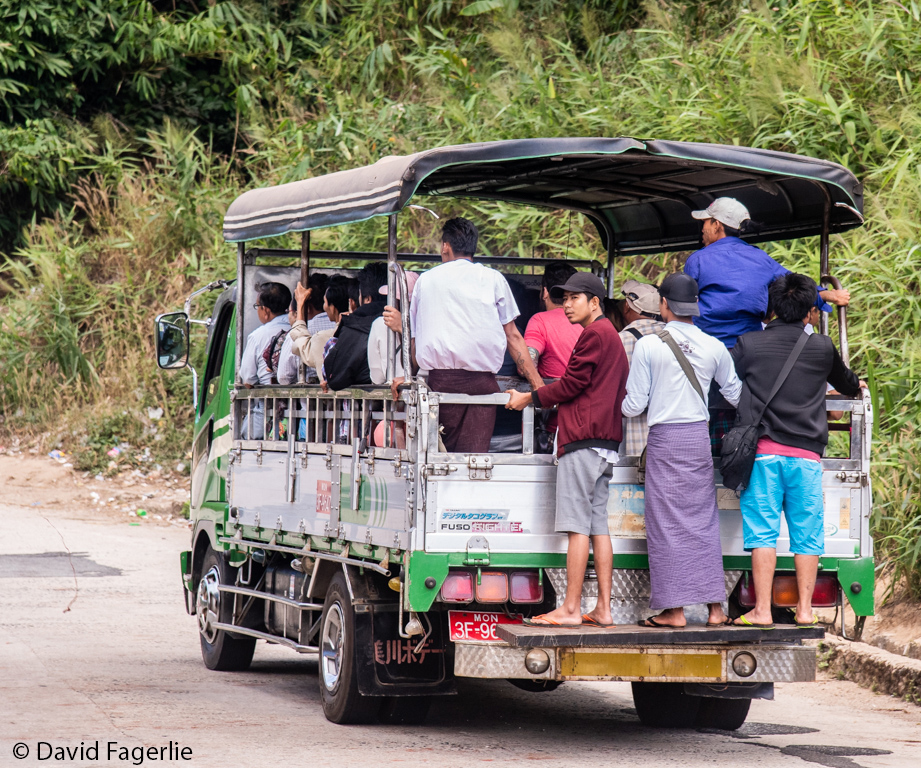
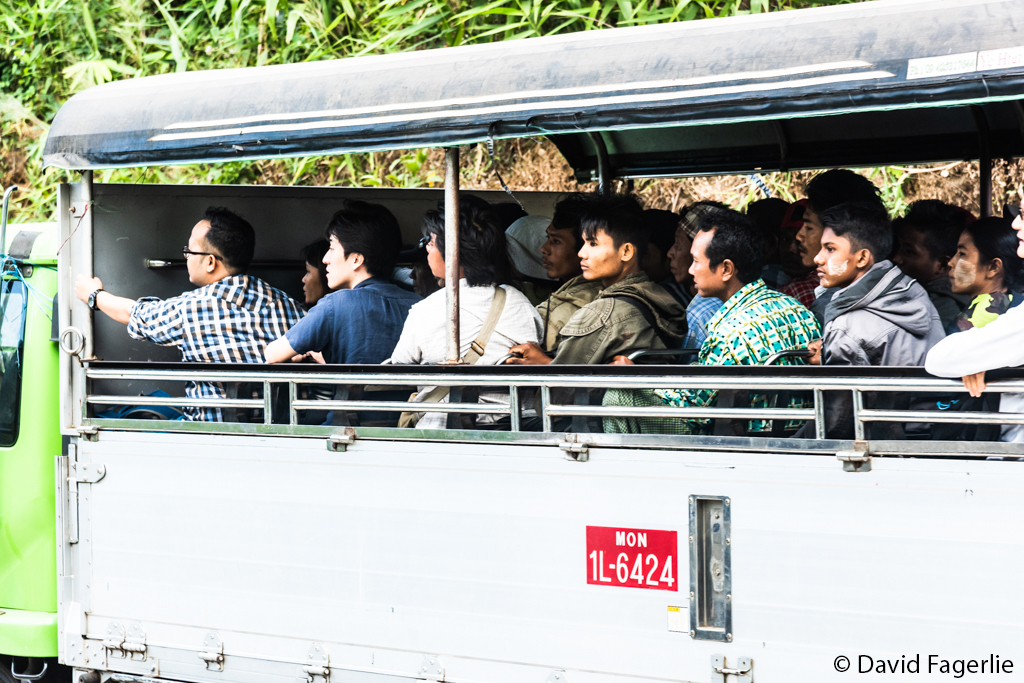
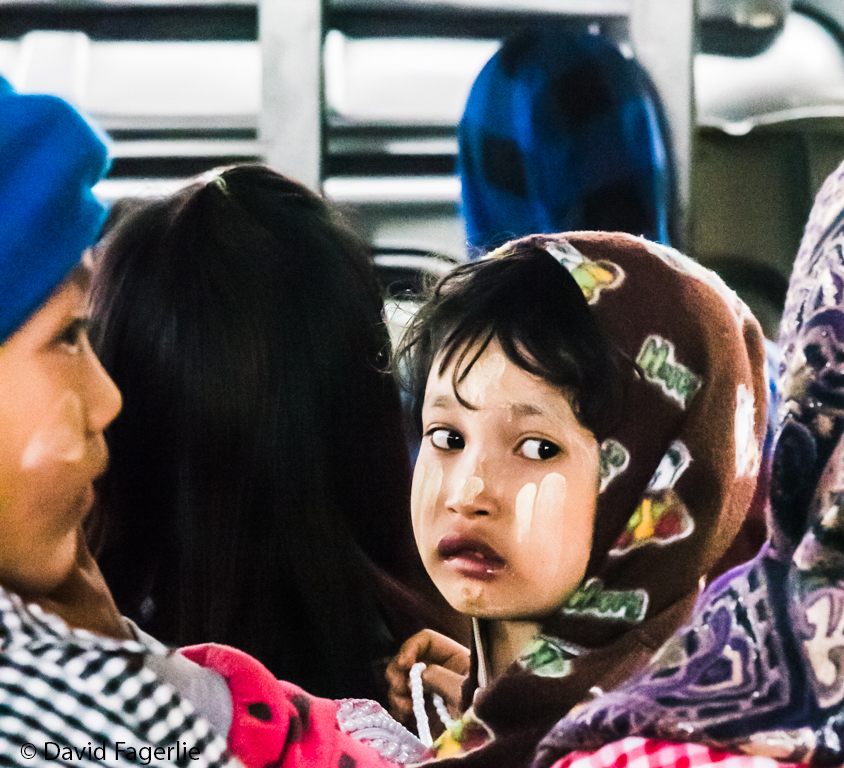
Behind the loading truck a line of identical empty trucks were poised to take their turn to load passengers. The trucks were a Chinese brand. I’m guessing they had roughly the power of a Ford F-150 – powerful but not mammoth.
Our guide signaled for us to take the back bench of the next truck. The entire bench was for the four of us, allowing sufficient elbow room to twist about and for me to place my day pack loaded with camera gear on the floor between my legs. That would not have been possible in any other row. Our guide ran interference to keep eager pilgrims out of our row. Our necessarily small overnight bags were loaded behind us along with some food supplies for the community at our destination. As soon as everyone was in the truck box, but not necessarily settled in, the truck pulled away from the platform and just as hastily an empty truck pulled up to take the platform position.
Our truck merged into a caravan of trucks, most with people, some with supplies, headed up the same mountain road. It was curvy – very curvy. 
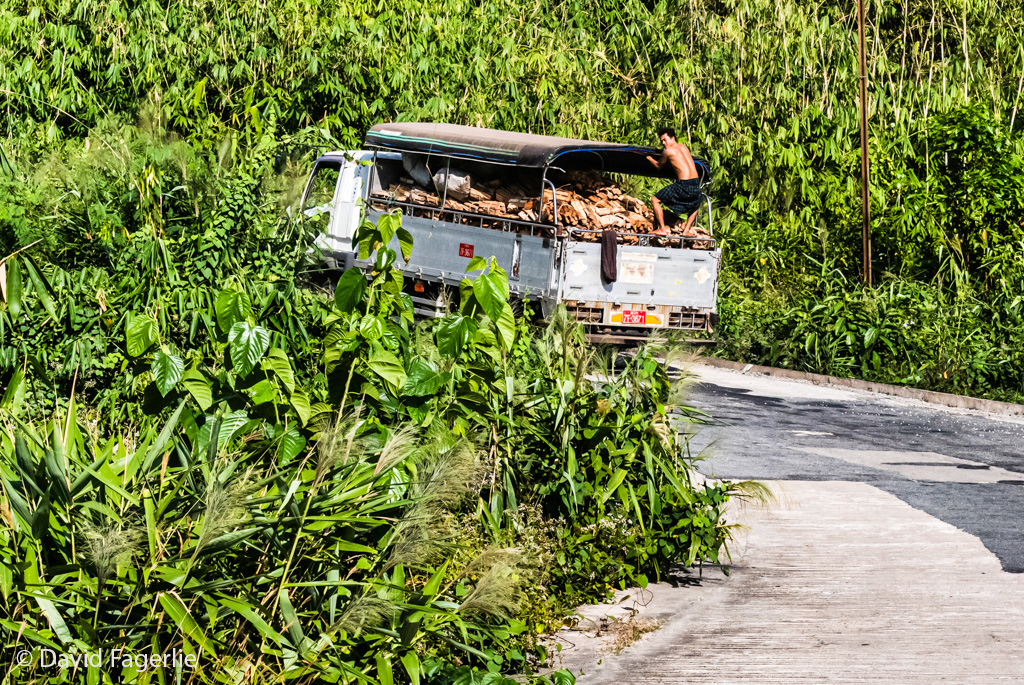

Our speed increased to well beyond what I imagined possible for a truck on this mountain road. Hanging on to the bar in front of me was essential and within a couple of minutes I realized I would not be changing lenses on my camera and that I would be shooting one-handed. The road was curvy for the entire hour-long ride up the mountain to Kyaikto. My gripping hand was aching when the truck finally stopped.
I was a bit wobbly getting out of the truck. In less than a minute the truck emptied passengers from what had been a long rollercoaster ride to solid ground. From there, we walked maybe a quarter mile along a wide road lined with tin-roofed makeshift shops selling all sorts of trinkets that we didn’t pay attention to. Elderly people not able to walk the distance were shuttled on stretchers fitted with a back support so that a passenger could sit propped up.
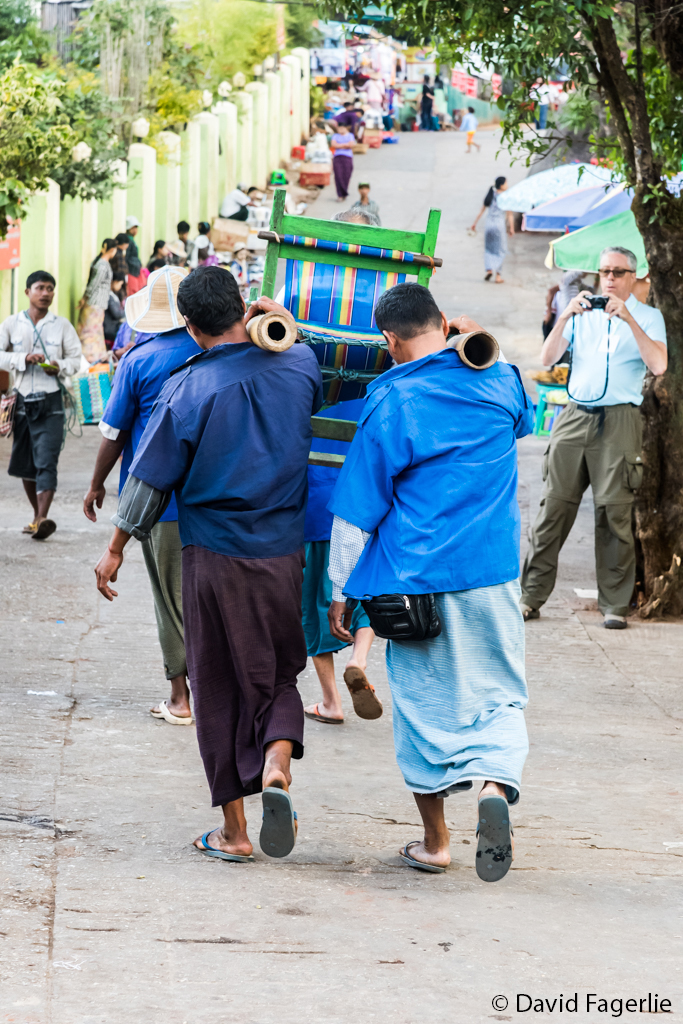
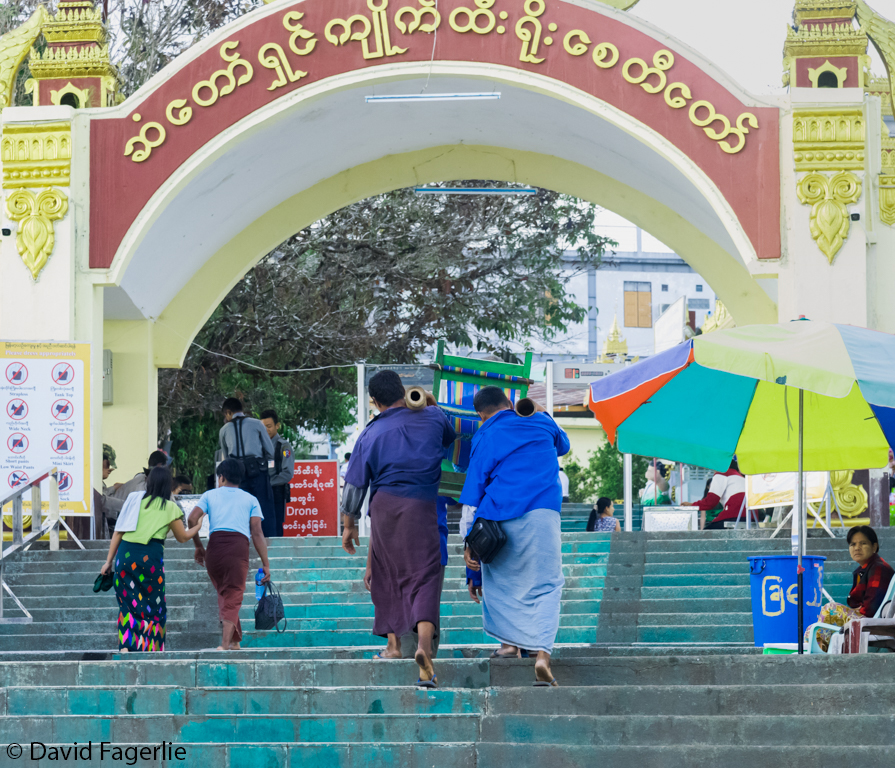
The road led to a small town center that had a mix of shops in better quality structures. A family relaxed on a covered porch that was the front of a take-out restaurant and a young woman was sweeping the sidewalk in the front of her store. Across the street from her was the entrance to our hotel. The hotel was a good experience, as was all of our lodging in Myanmar. 
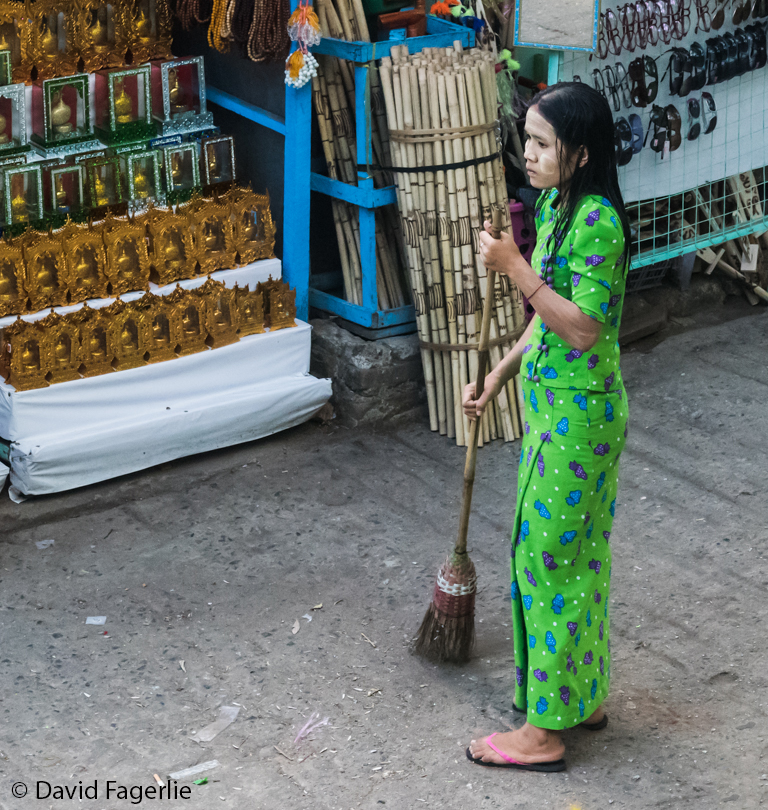
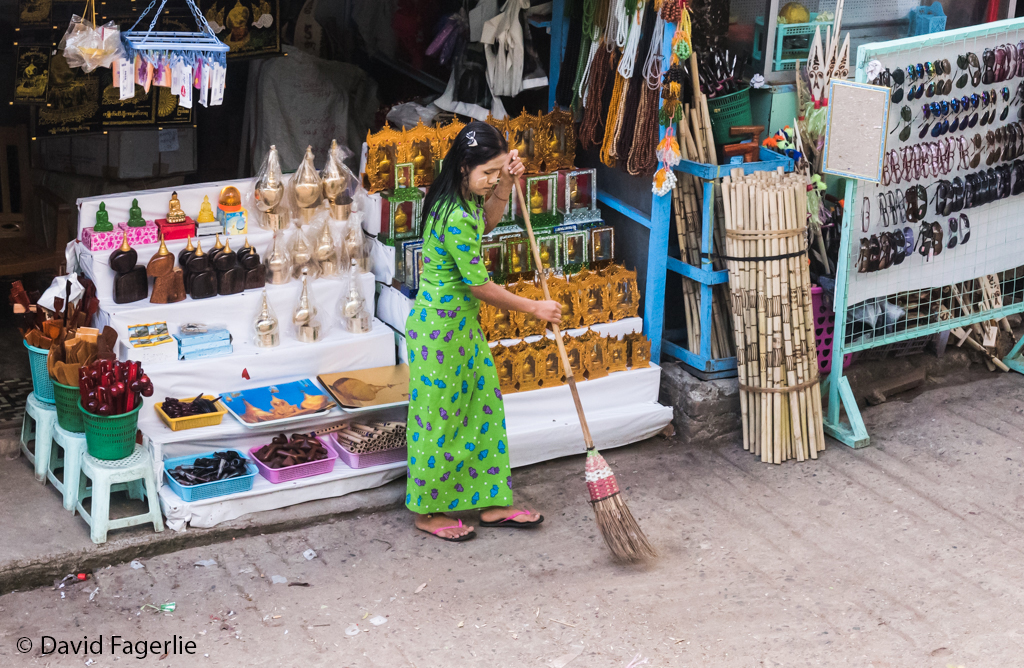
After a while we started our walk to the Kyaiktiyo Pagoda and Golden Rock. There wasn’t anything noteworthy to see until there it was, Golden Rock, a big gold rock with a pagoda on top. The pagoda is about 7.3 meters in height, built atop of a boulder, which is 7.6 meters tall and 15.2 meters in circumference. Golden Rock lies on an inclined plane and the area of contact with the mountain is quite small. The boulder overhangs half its width with a sheer vertical drop below it. A small plaza on stilts wraps around the mountain just below the boulder.
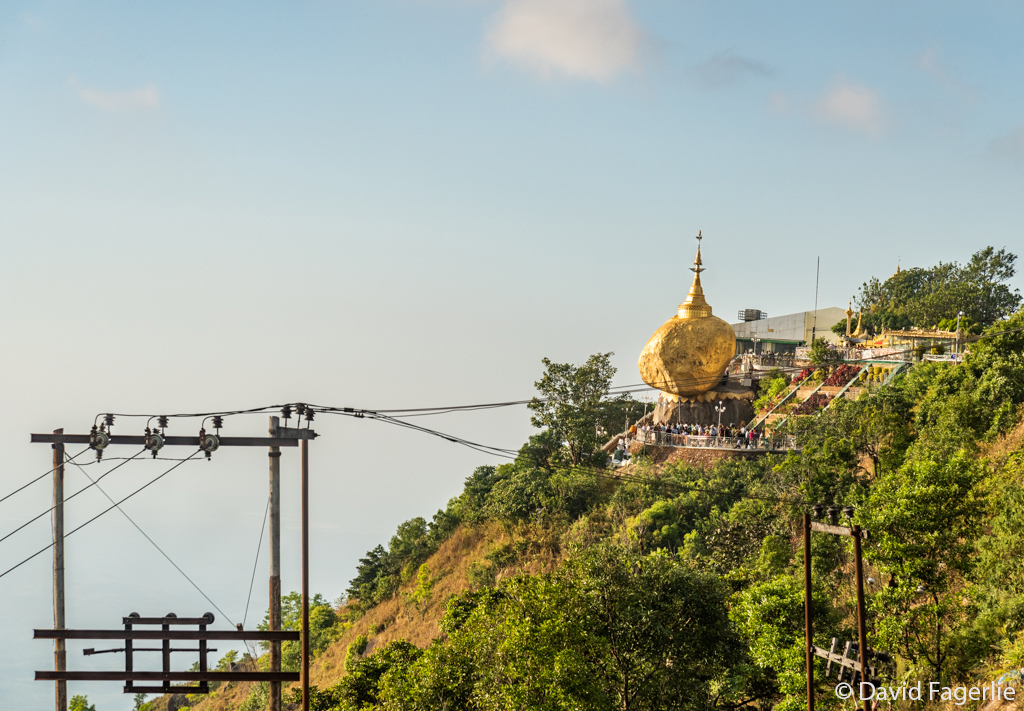
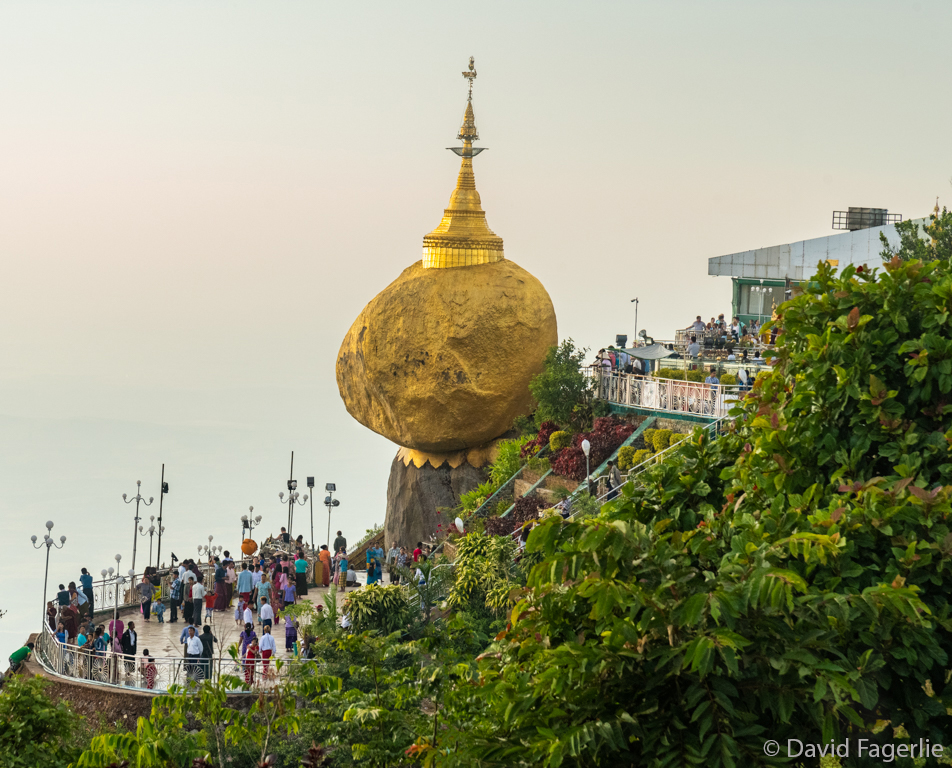
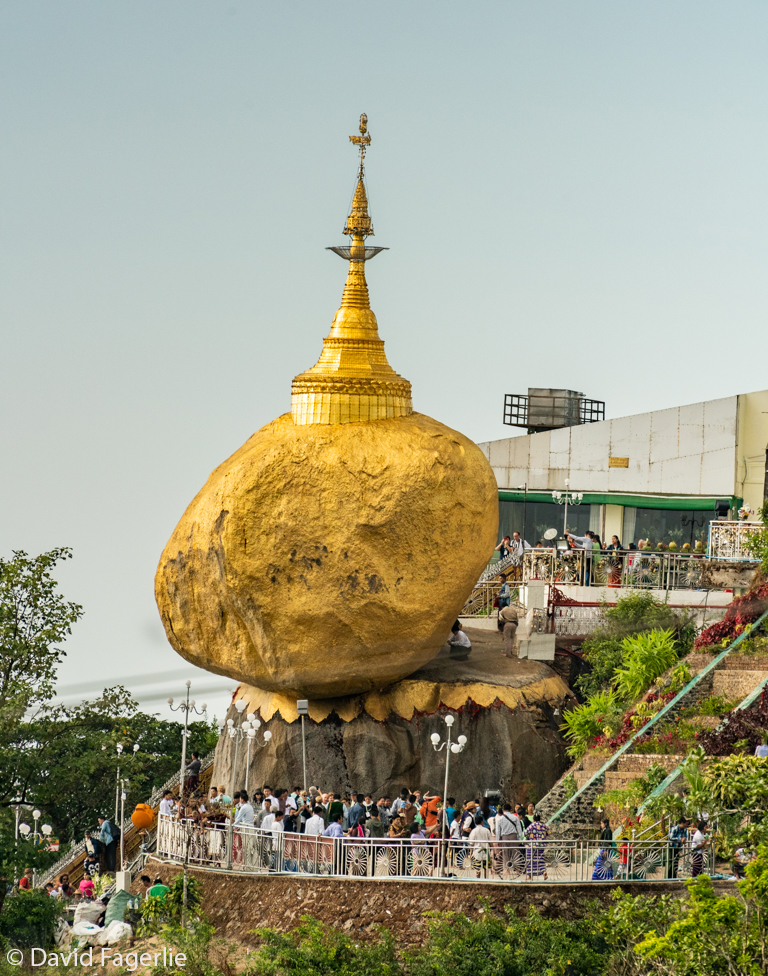
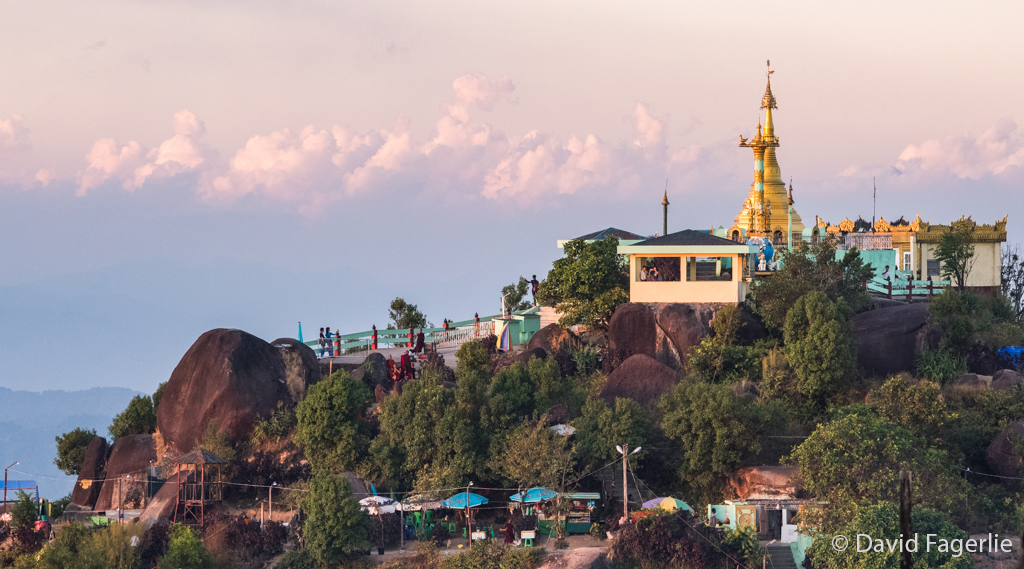
Leading up to the rock on the upper level is a large plaza where people sat on the floor in groups visiting and laughing, obviously enjoying their time together. They were on a pilgrimage, at least for the day. By now we had been in Myanmar for a few days and it was clear to me that pilgrimages are social as well as spiritual events for the Myanmar people. It was sort of like a backyard barbecue without the barbecue. There were plenty of vendors selling “picnic” food.
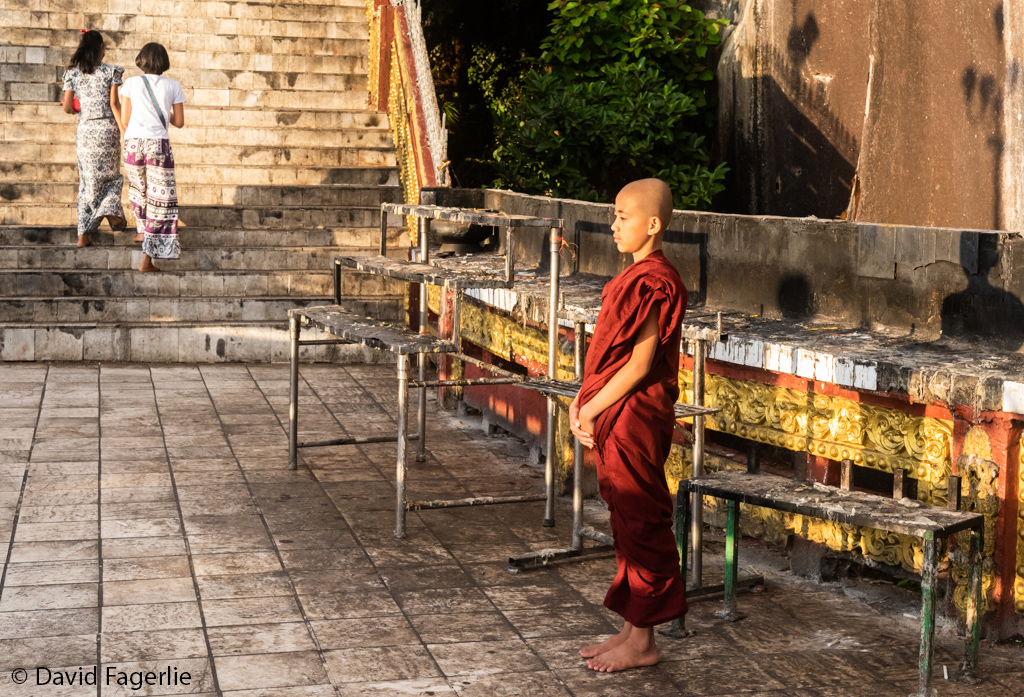
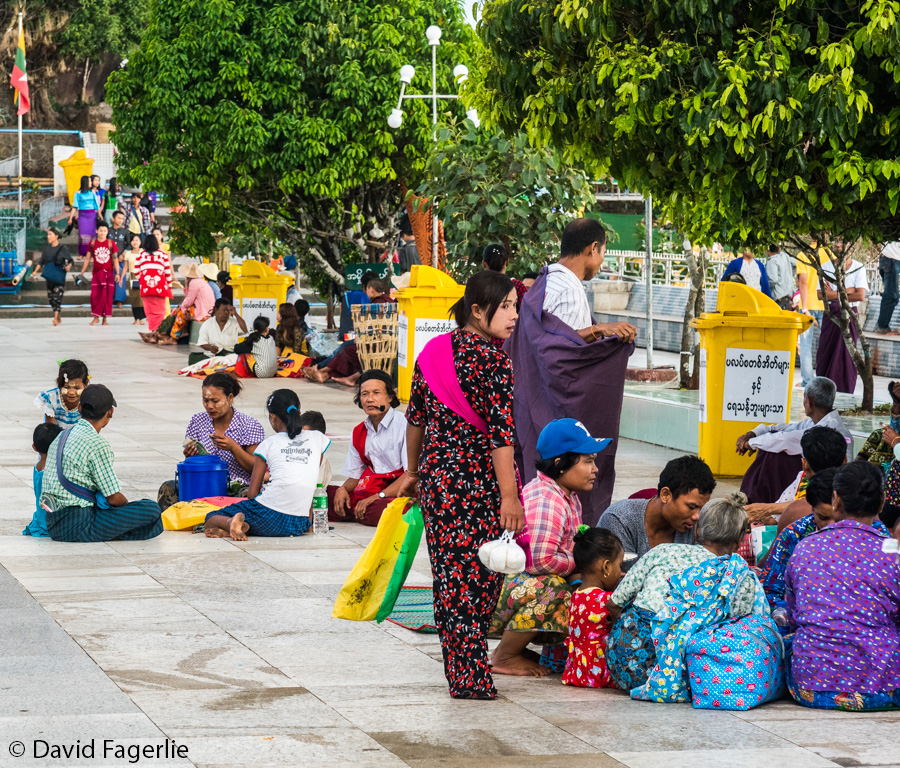
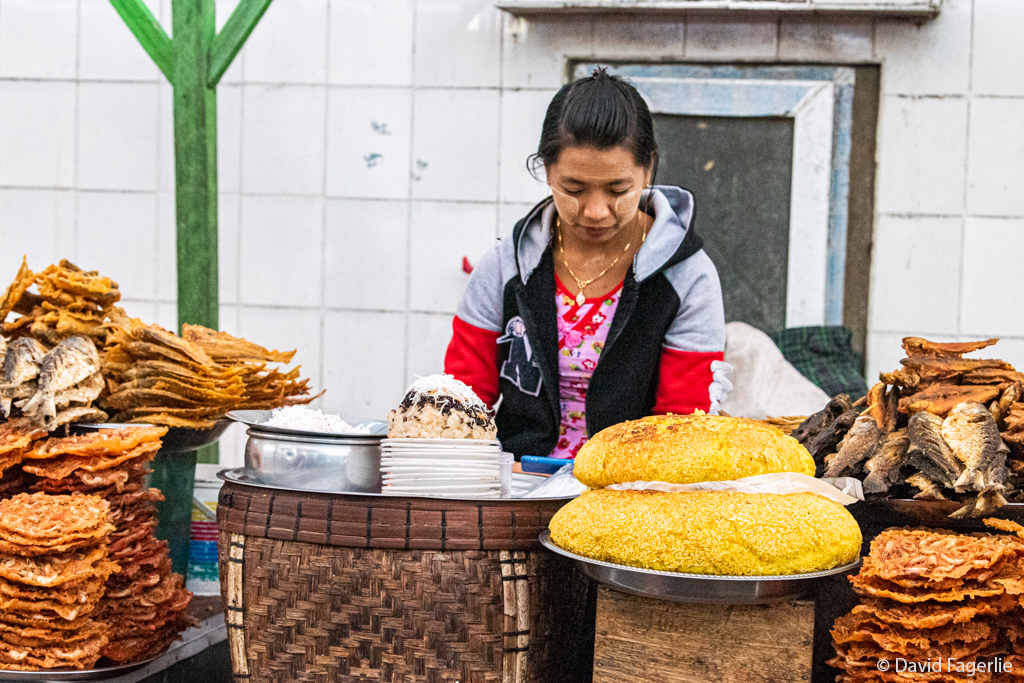
On the suspended wrap-around plaza three young women sat chanting in harmony. I could not understand their words. No matter, the harmonic sounds were beautiful and mesmerizing and had a calming influence. They were chanting when I arrived and I enjoyed their sounds for over an hour more.
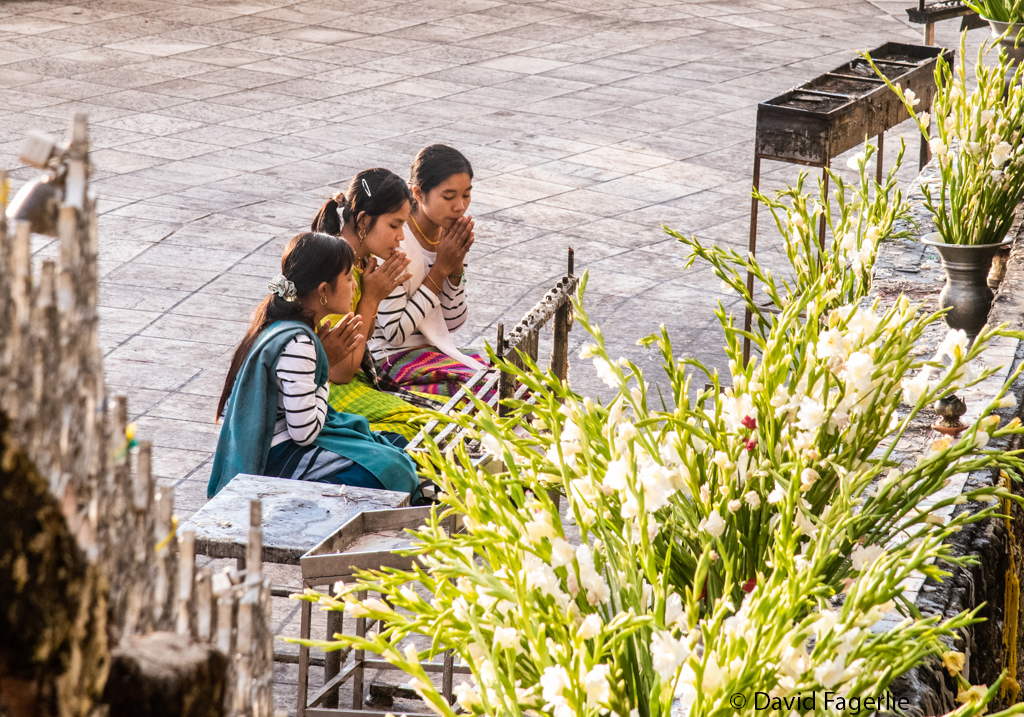
A narrow and short bridge spans from the upper level plaza to the rock outcropping that the boulder sits on. Only men and boys are allowed to cross the bridge and touch Golden Rock. Where the boulder and humankind meet, Golden Rock is plastered with thousands of layers of gold-leaf. Each two-inch square sheet of gold leaf is a testament to so many aspirations and apologies passed on and wishes requested. I pressed a piece of gold leaf on the rock until it melted into the layers that earlier pilgrims left behind. I offered my wishes and I felt a bit of a tingle afterwards. 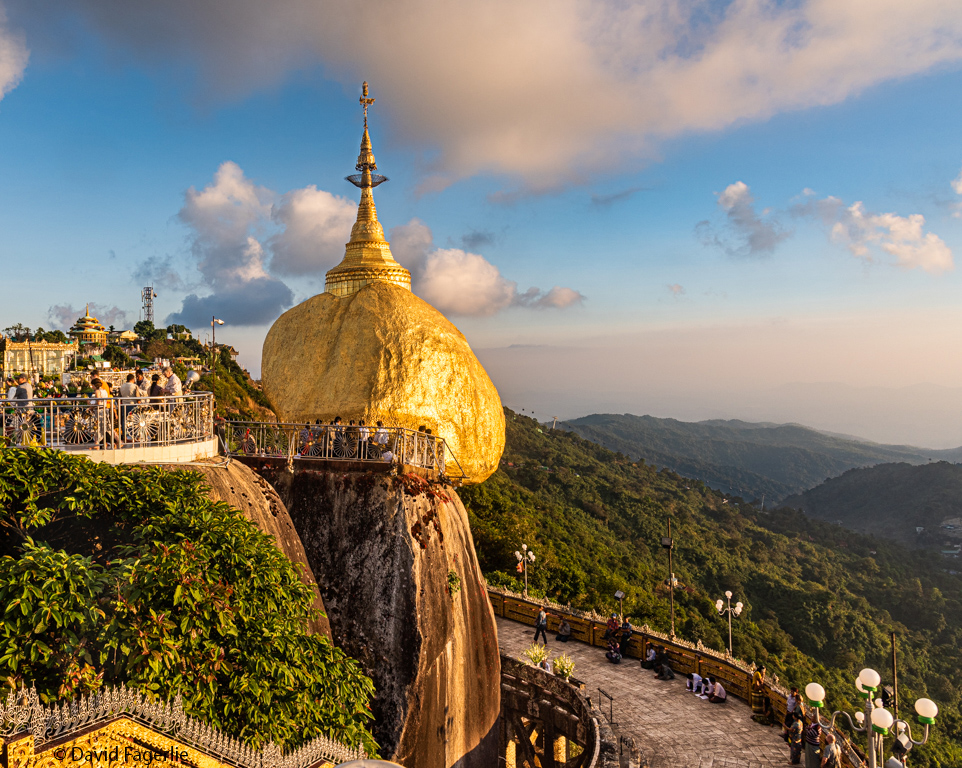
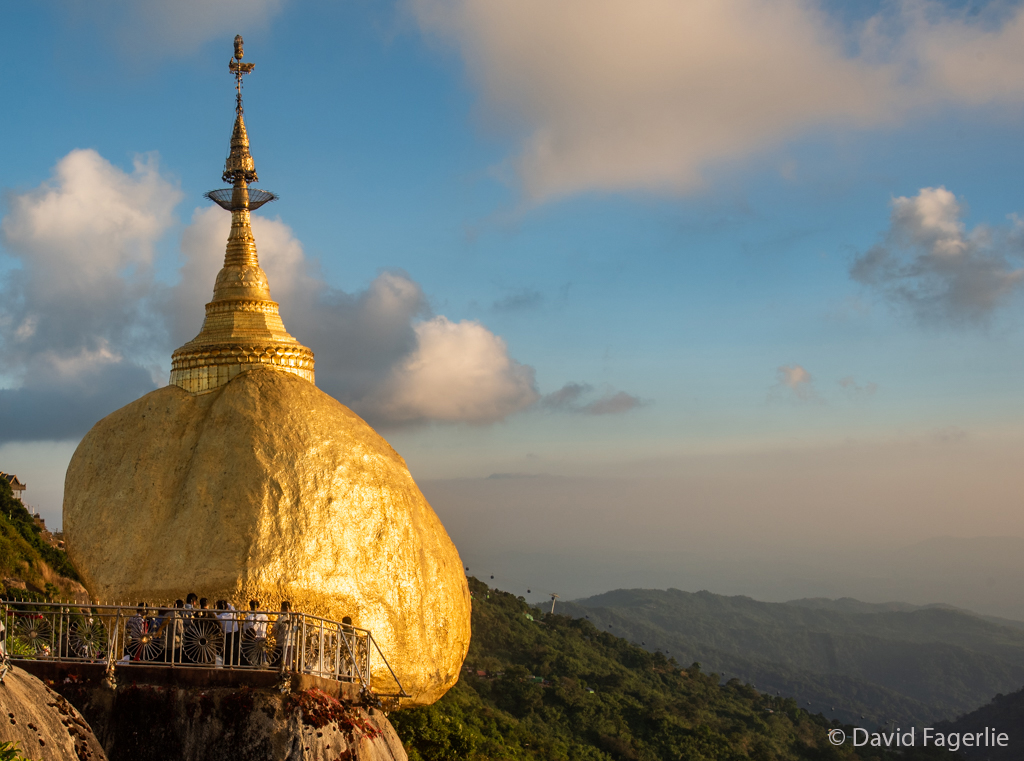
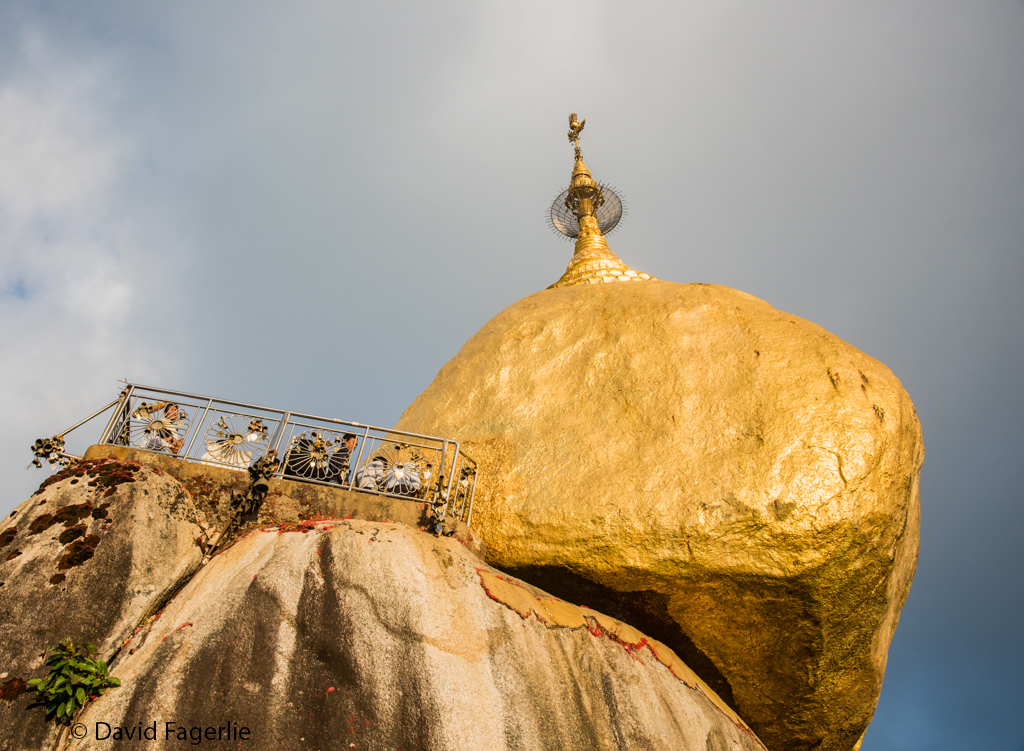
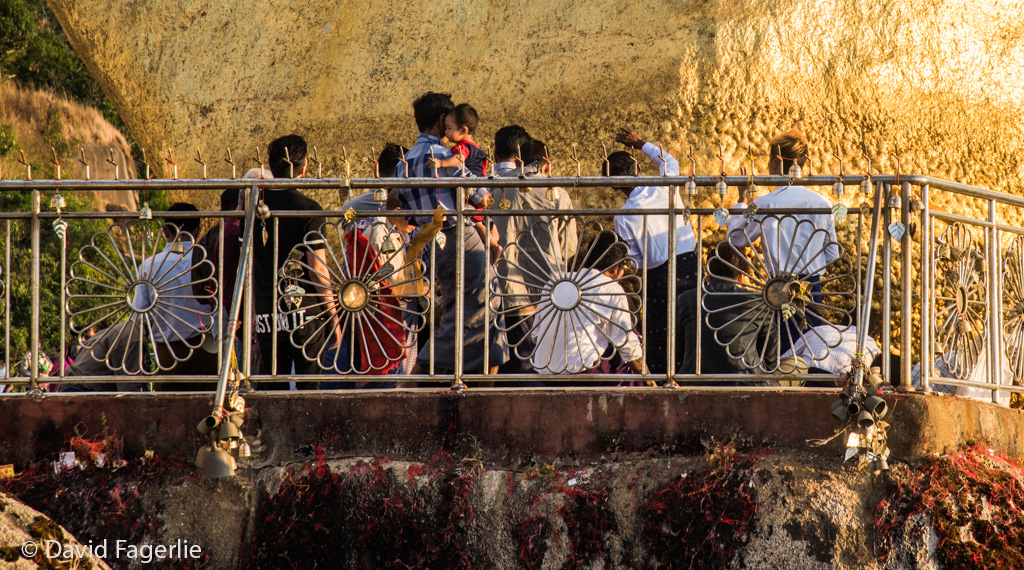
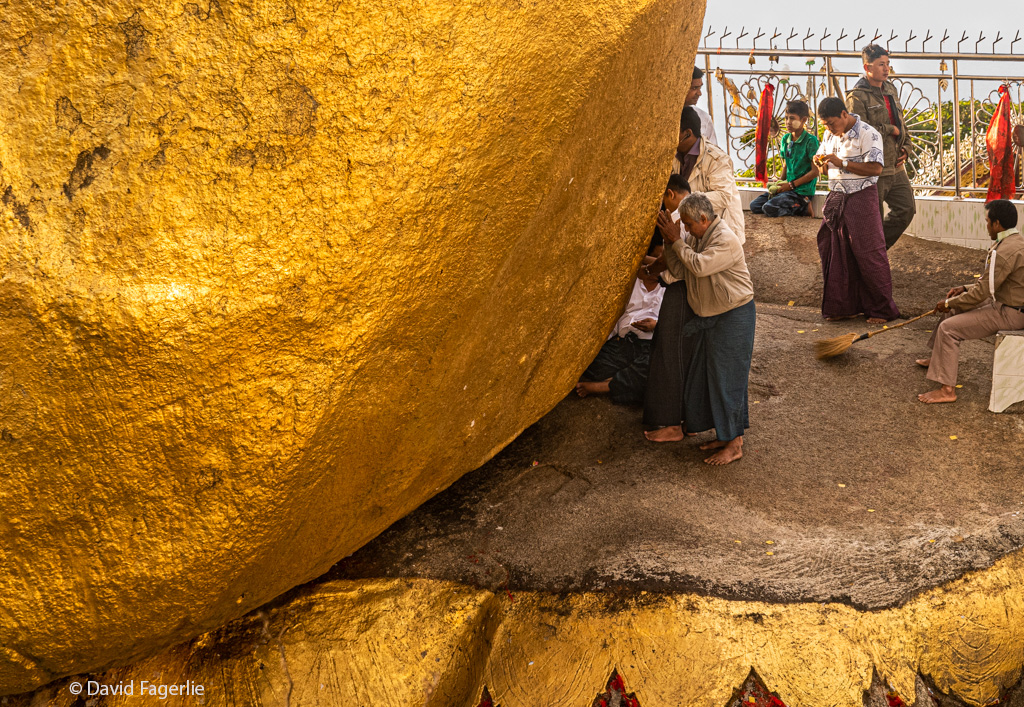
The Kyaiktiyo Pagoda and Golden Rock is the third most important Buddhist site in Myanmar, after the Shwedagon Pagoda and the Mahamuni Buddha. Legend has it that the Buddha gave a strand of his hair to Taik Tha, a hermit. The hermit in turn gave the strand to the king, with the wish that the hair be enshrined with a boulder shaped like the hermit's head. They found this boulder at the bottom of the sea and brought it to this perfect place where the strand was enshrined. It is believed that this strand of hair prevents the boulder from tumbling down the mountain.
When dusk arrived Kyaiktiyo Pagoda and Golden Rock took on a different atmosphere. Like at the Shwedagon, the evening mood was more subdued.
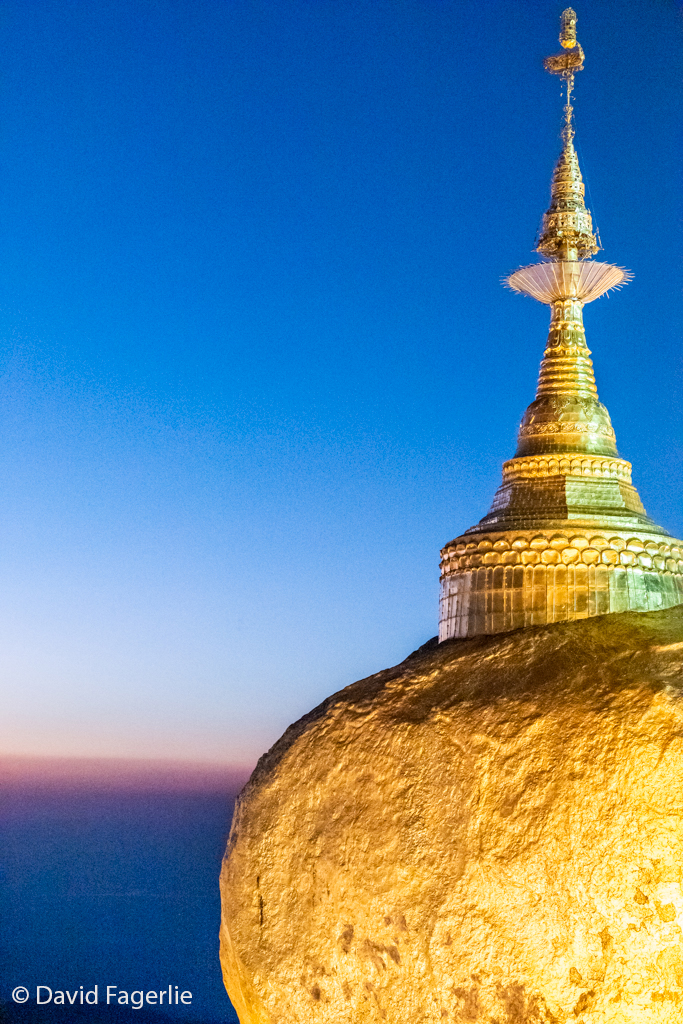
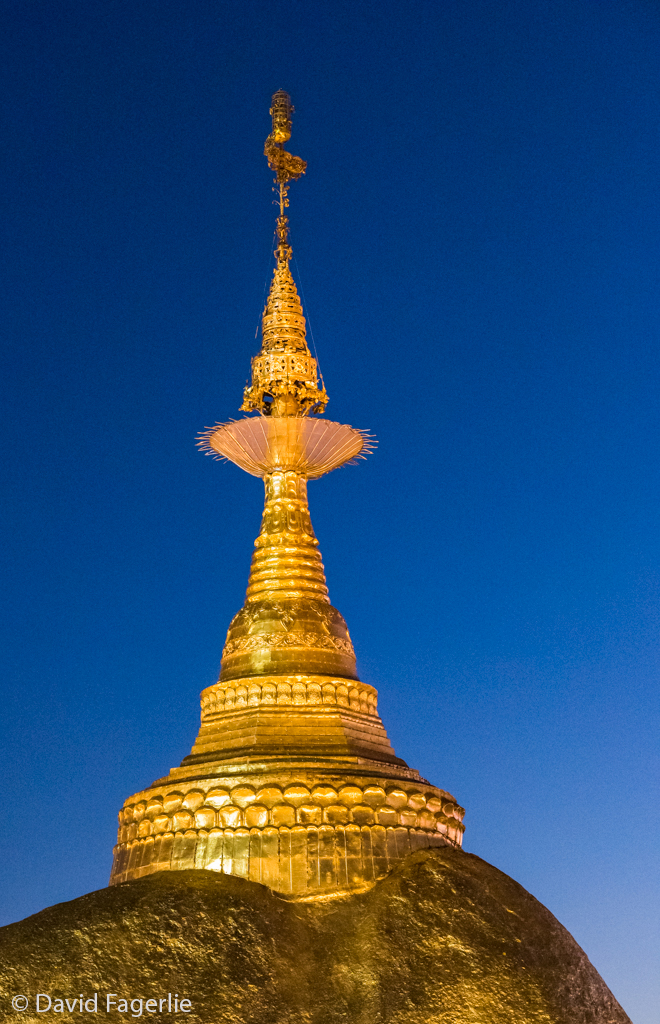
The crowd seemed especially contemplative. A young woman who was deep in thought looked off into the distance. I found myself wishing I could know her thoughts and the collection of thoughts of the other people there.
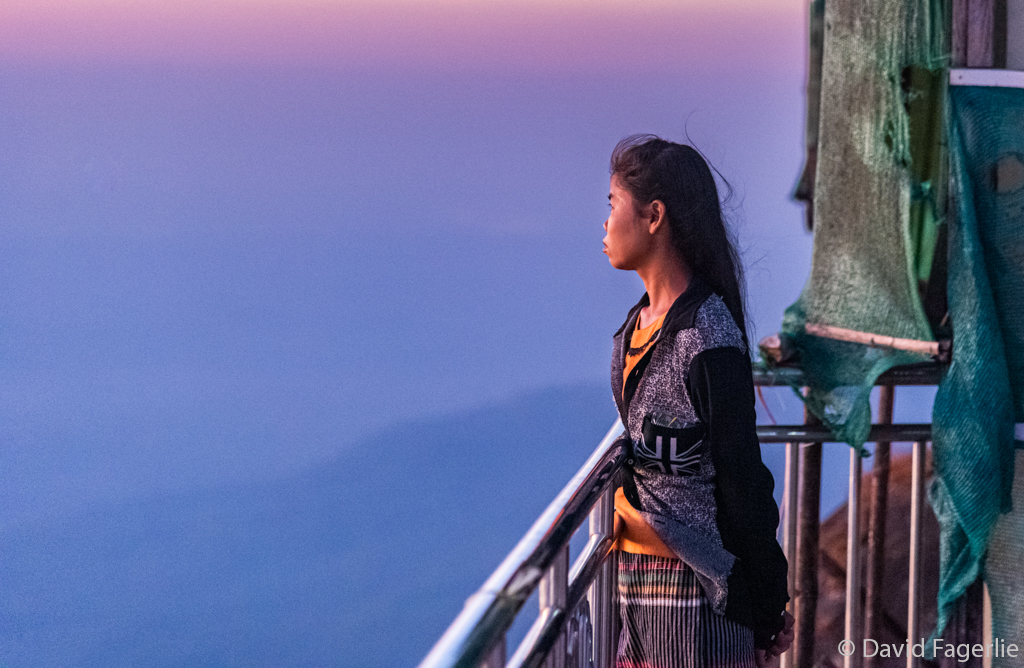
The next morning we boarded a truck for our descent to the Kinpun base camp. Downhill traffic was congested and our truck stopped a few times, perhaps as planned? Vendors wanting to sell all kinds of souvenirs tried to get the attention of passengers when our truck stopped. The toy guns made from bamboo seemed especially out of place. 
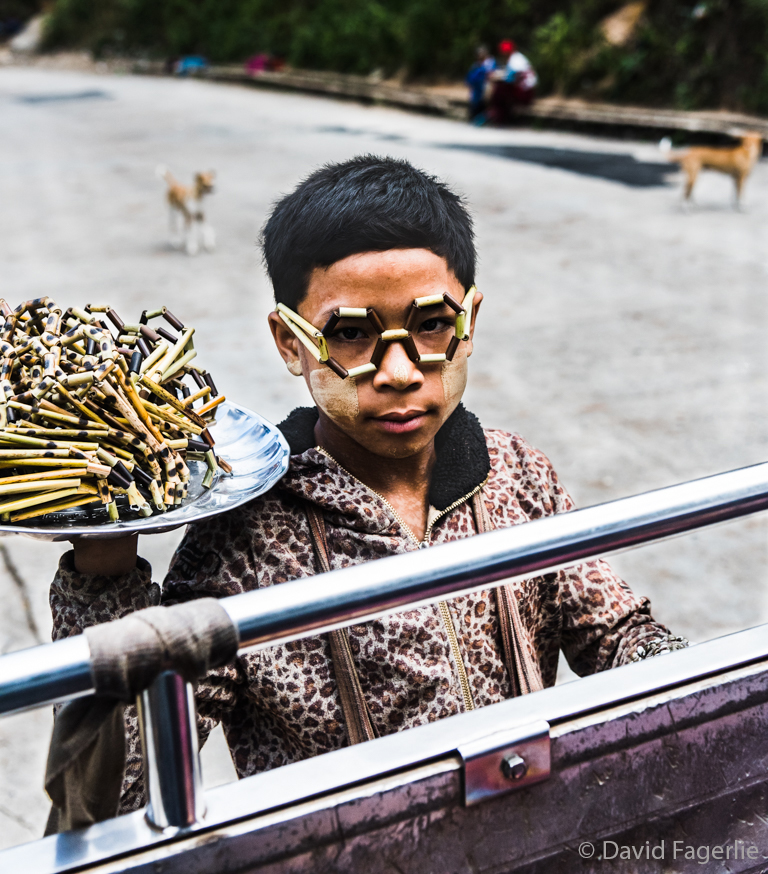
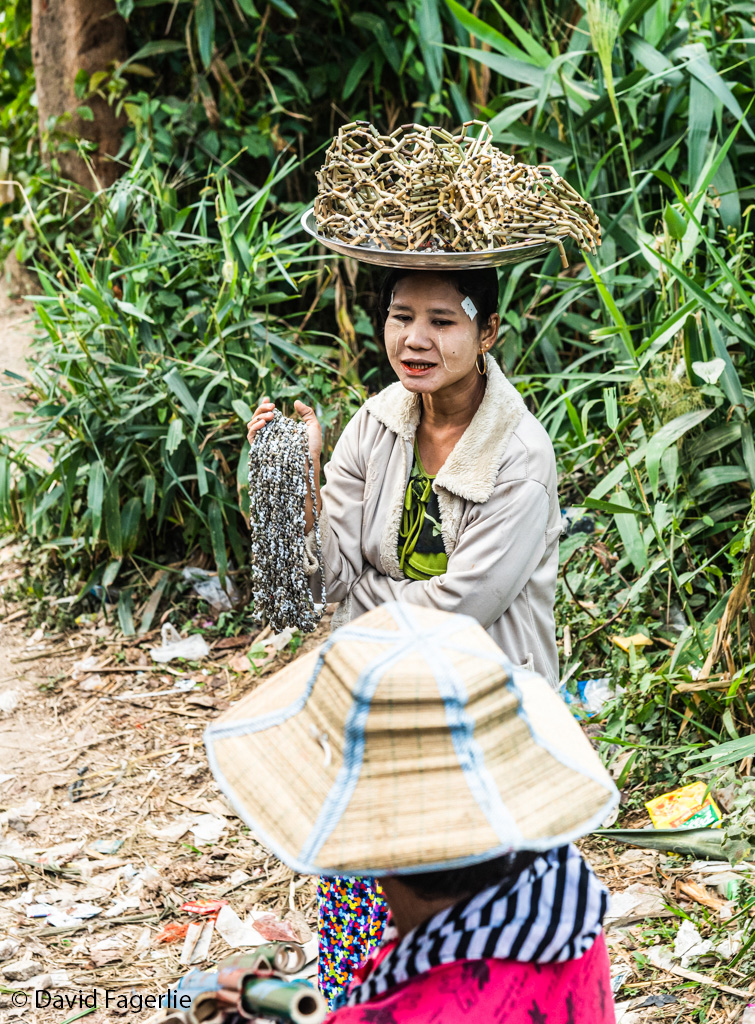
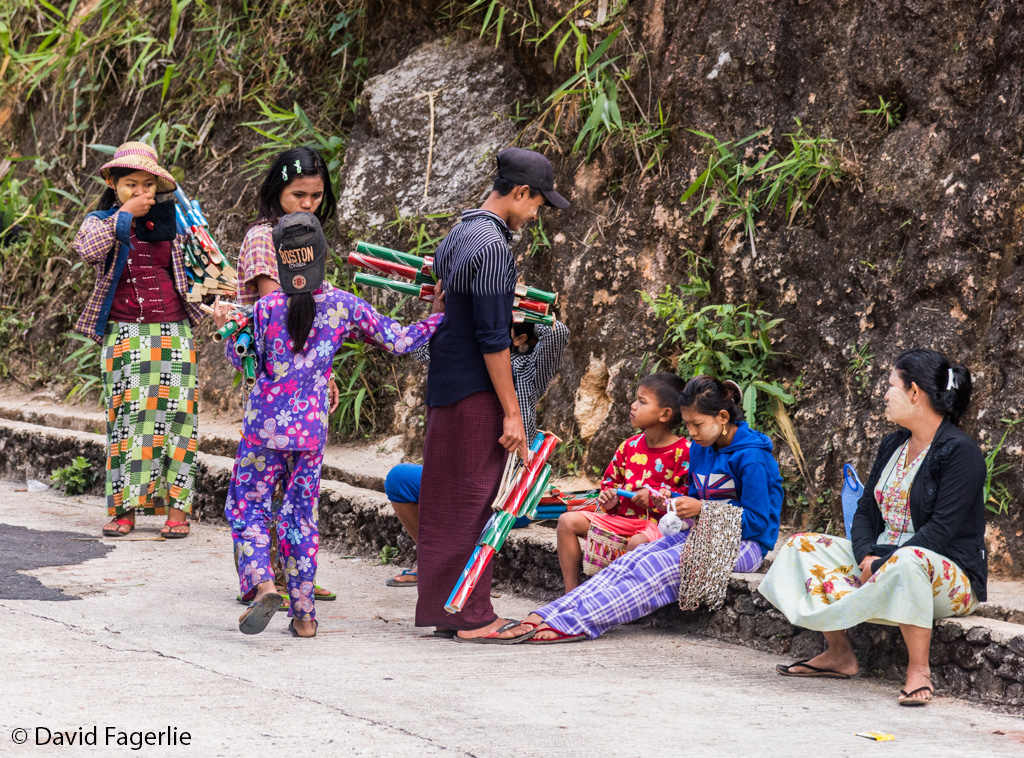
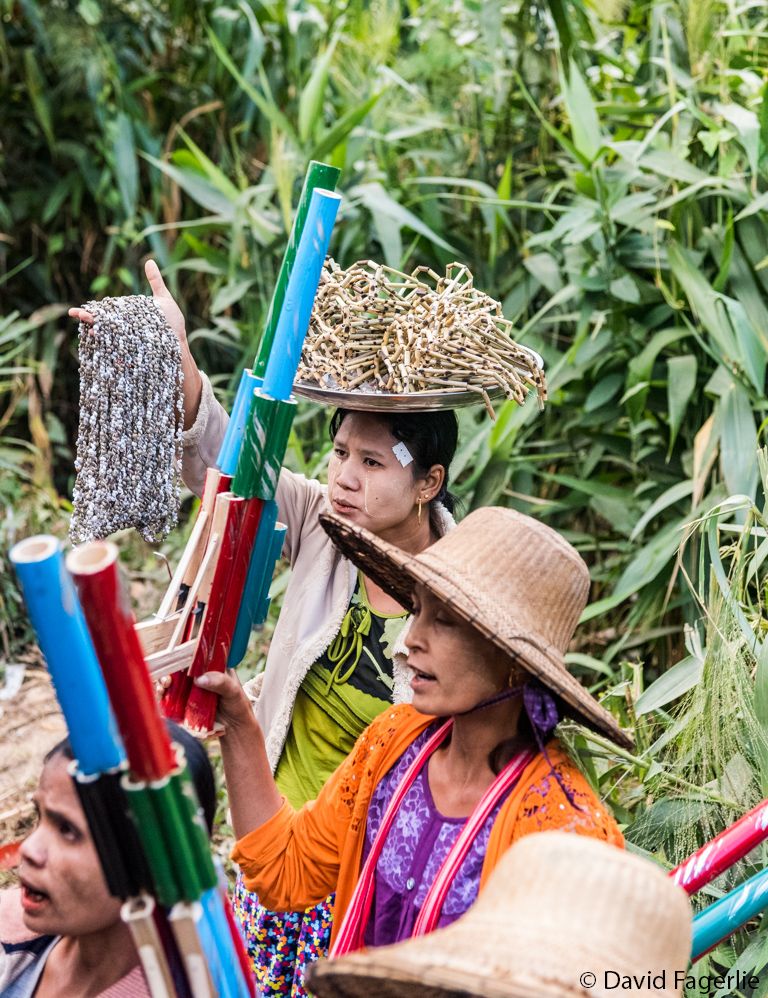
I was more observant of the countryside on the return trip to Yangon. We breezed past fields extending to the horizon with a herd or two of water buffalo for good measure.

Thanaka
In images in chapters one and two you noticed gold or yellow colored cream applied to the faces of women, children and some men. All of the women and most of the children I saw in Myanmar had this cream applied to their cheeks and often to their foreheads and noses. The cream is made from the the Thanaka tree. The people of Myanmar believe the cream is a cosmetic that adds beauty to one’s appearance, has medicinal properties, such as an application after too much sun exposure, and protective qualities, such as acting as a sunscreen. These claims are supported by research. In addition to being a sunscreen and helping skin to retain moister Thanaka cream has high concentrations of antioxidants and anti-inflammatory properties.
Thanaka trees are harvested after they have matured for at least 35 years. Only the bark is used to make Thanaka cream. The wood, which is similar to sandalwood, is used to make jewelry, trinkets and the like. The bark is ground on a flat stone with a little water to make the cream. Thanaka is indigenous to Central-Myanmar where it grows in abundance. The Burmese people have been using the cream for over 2,000 years.
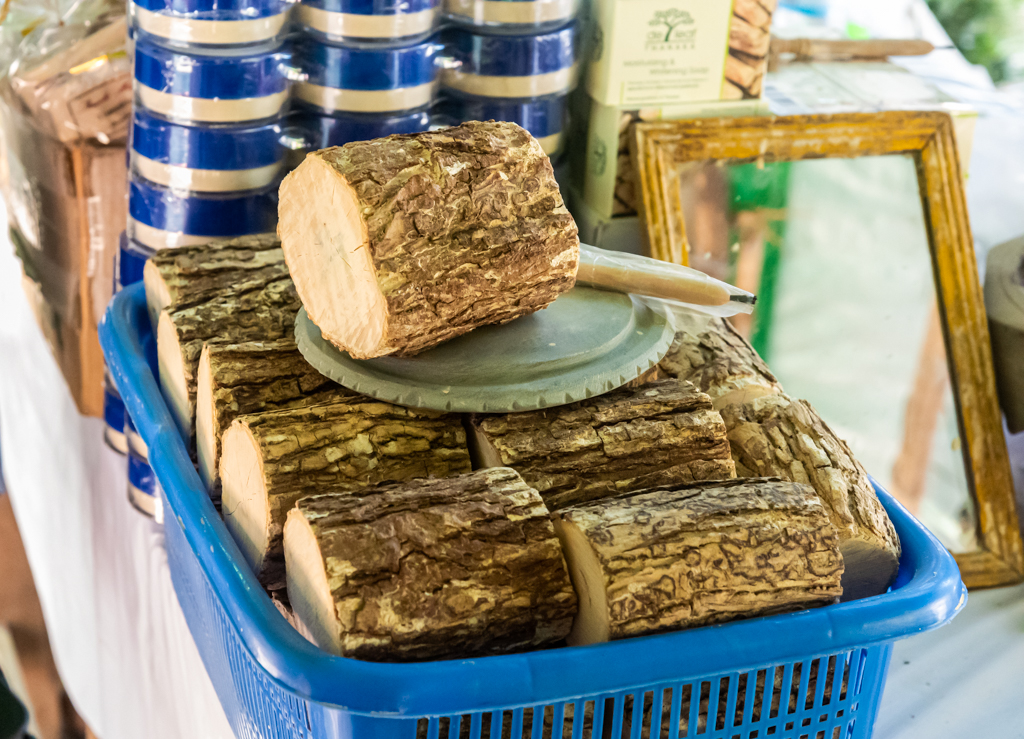
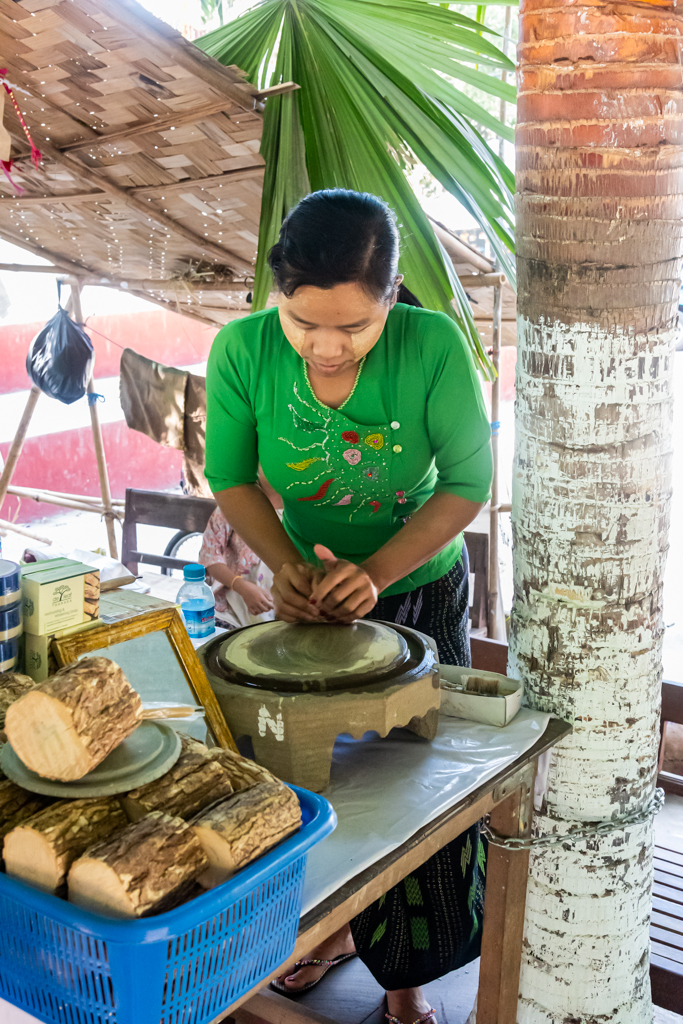
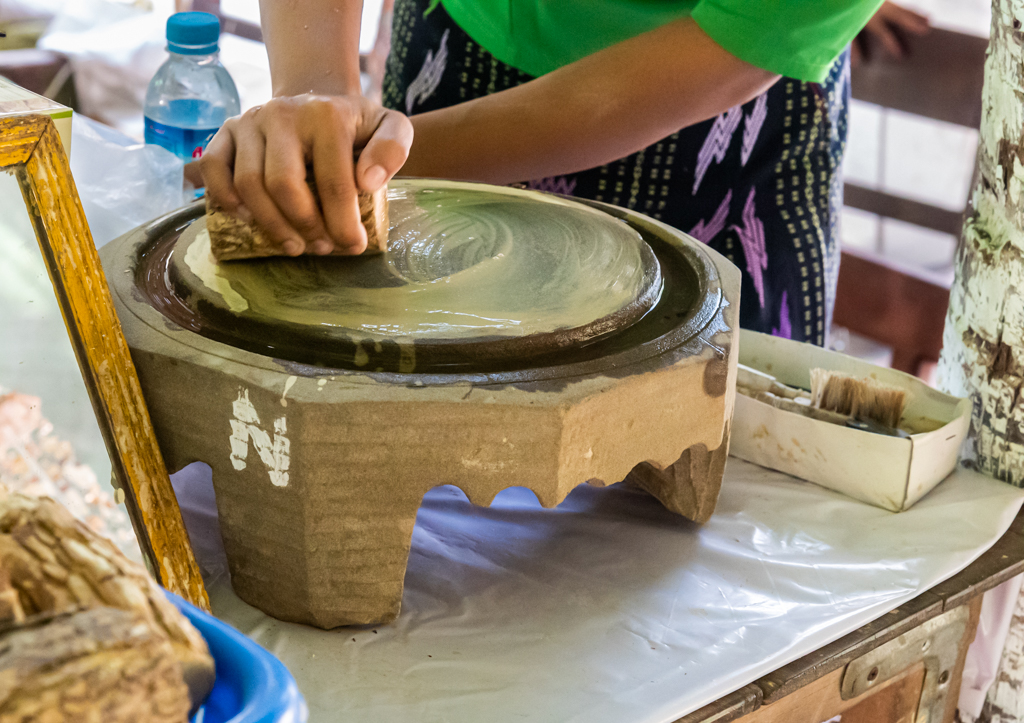
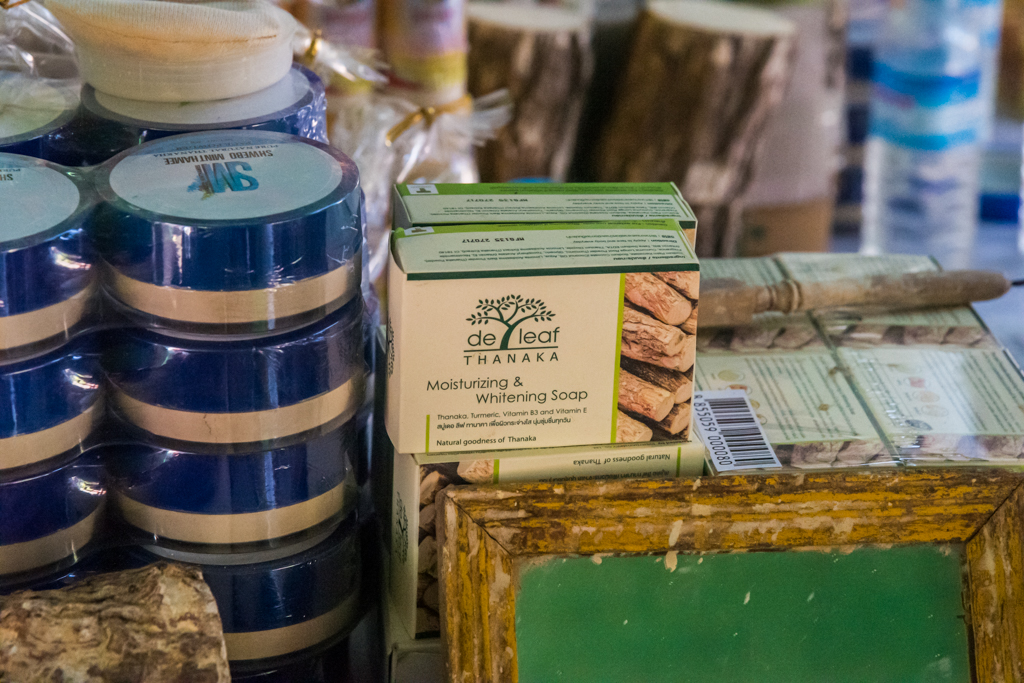
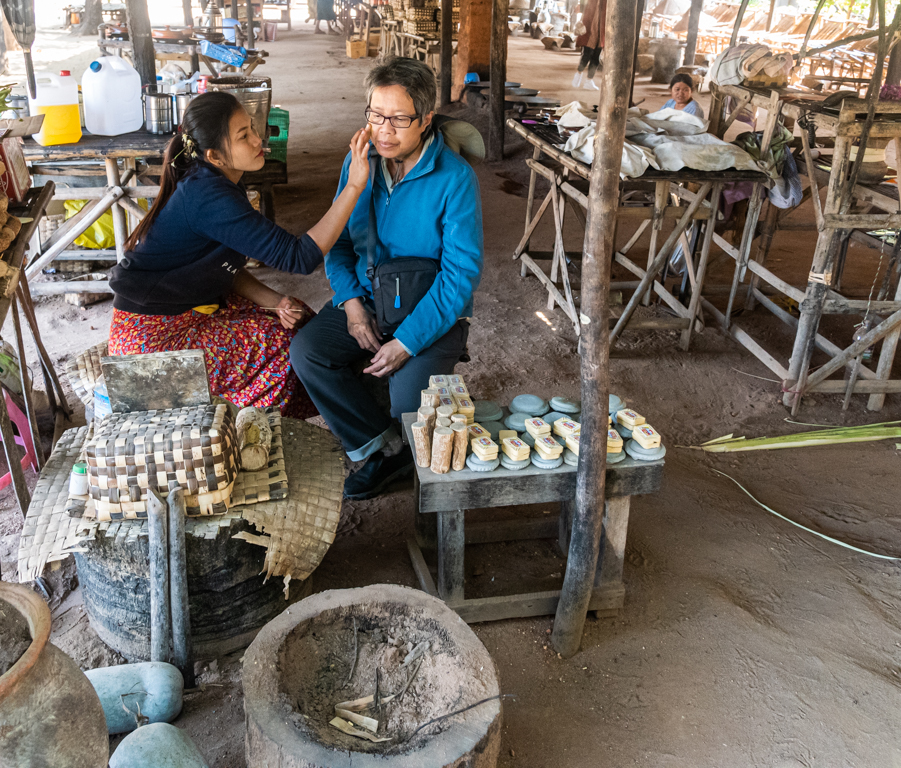
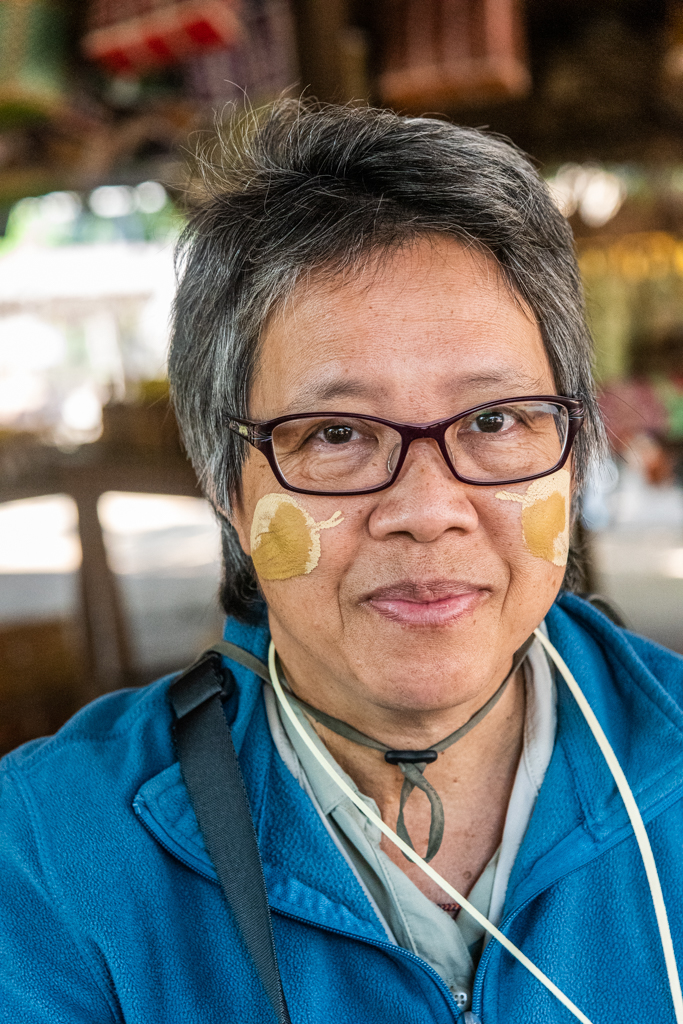
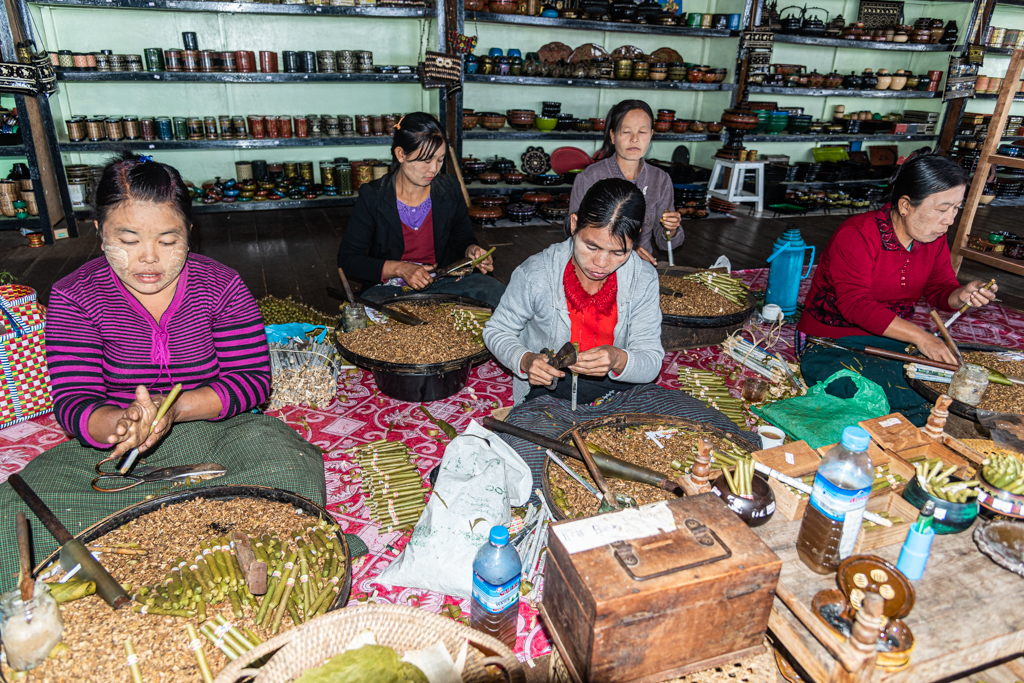
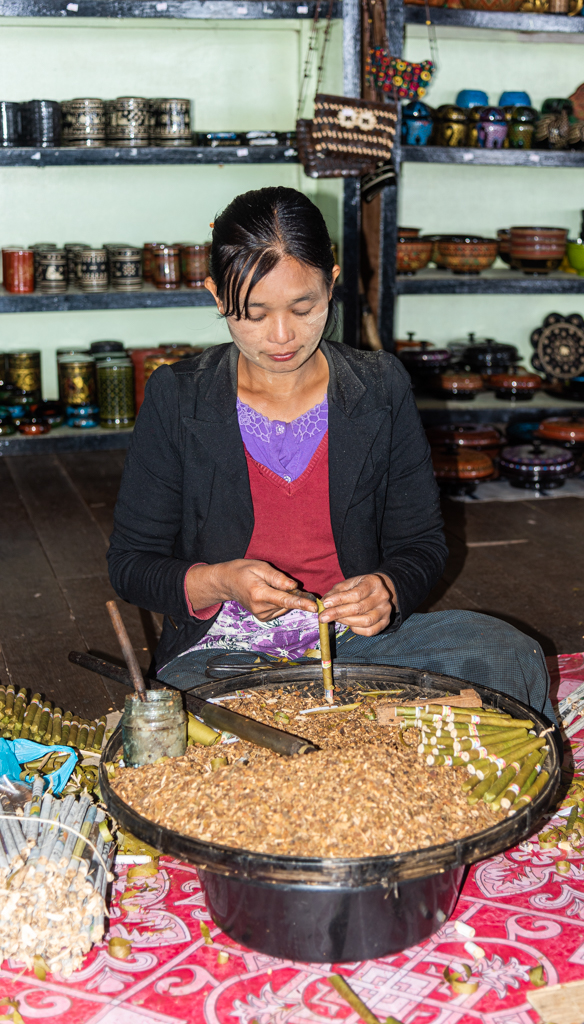
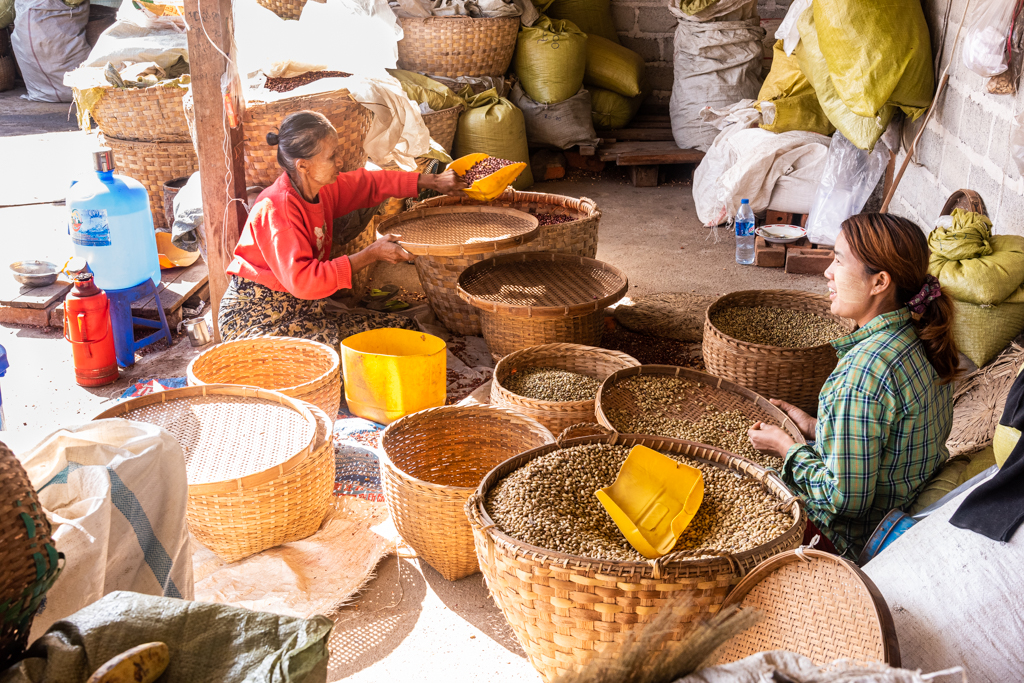
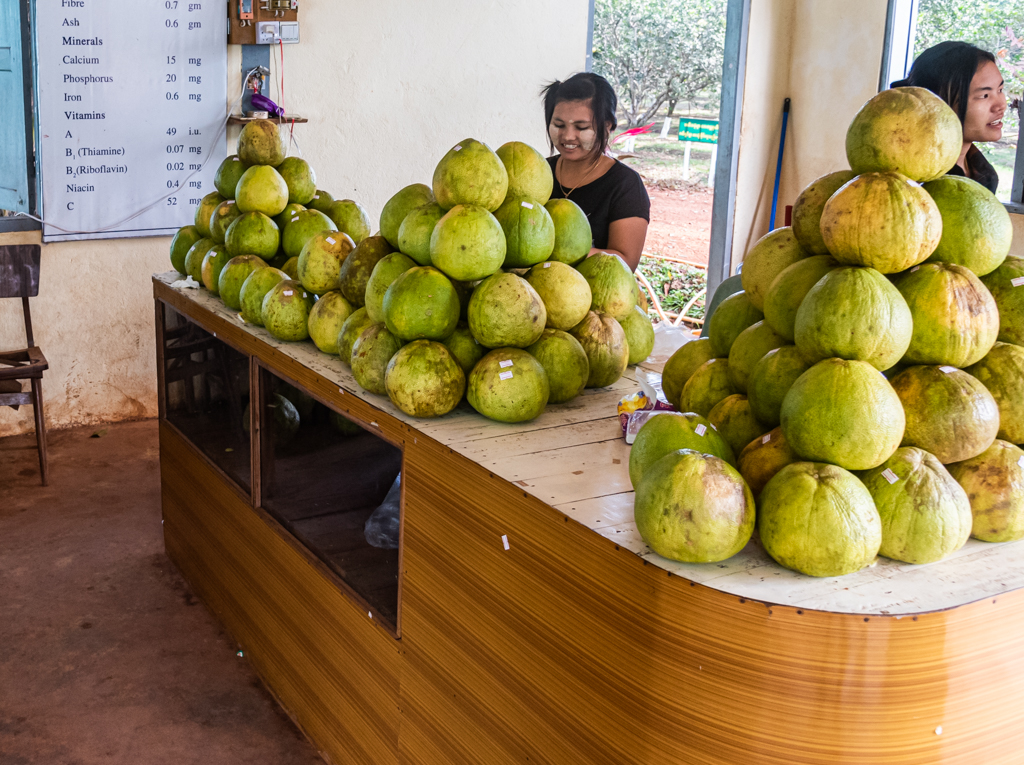
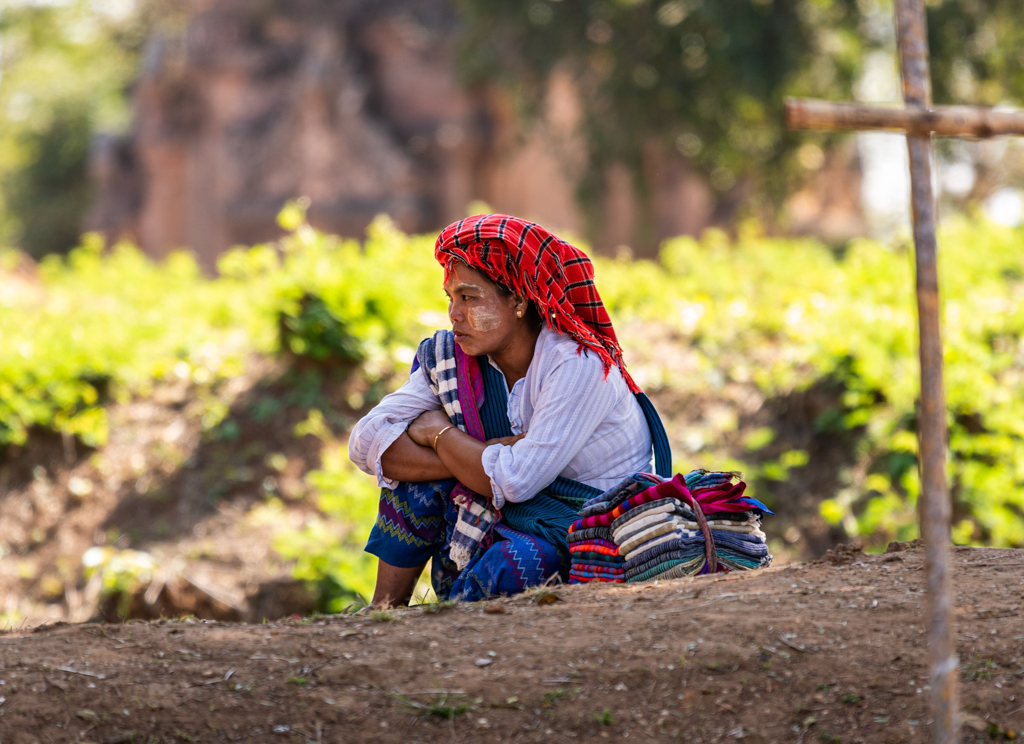
The photos of Chapter 2 can be seen in higher-resolution in its gallery. A reminder: click on the first image to reveal direction arrows, the full screen button in the upper right and a play button if you wish to automate the slide show. You can access the gallery for this chapter directly by clicking HERE.
Next Monday we visit Bago and Bagan. See you then.
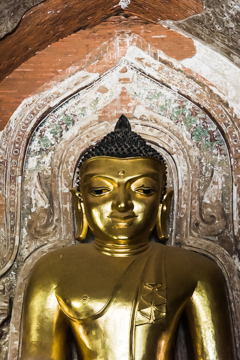
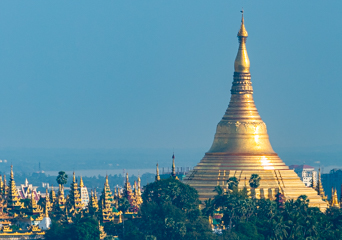
September 03, 2020
Chapter 3: Bago & Bagan
A short distance northeast of Yangon but still in Southern Myanmar is the city of Bago; in 2014 the population of Bago was more than 254,000.